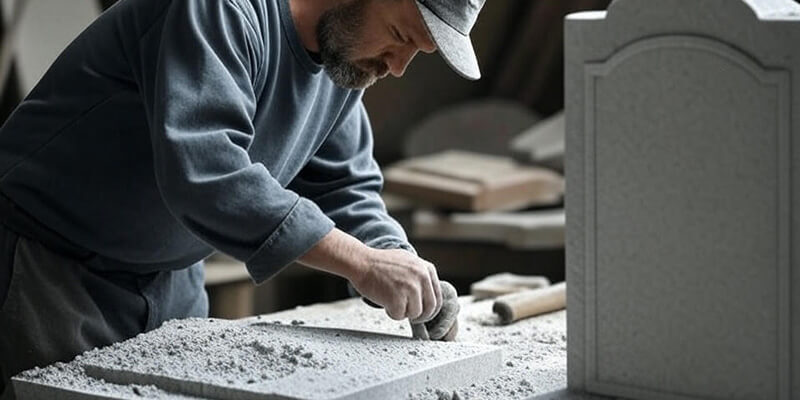When we walk in a cemetry, we often see rows of stone markers. Each one tells a story. They show names, dates, and sometimes short words of love. But who makes these stones? The answer is a skilled craftsperson known as a Tombstone maker.
A tombstone is not just a block of granite. It is a work of art and a record of a life. Making one takes time, skill, and care. This work has been around for many centuries, and the people who do it keep a long tradition alive.
The Work of a Tombstone Maker
A Tombstone maker shapes stone into a lasting marker. This job starts with a raw slab of granite, marble, or limestone. The maker cuts, polishes, and carves it. The stone must be strong so it can last for 100 yrs or more. Granite is the most common material because it can stand against wind, rain, and snow.
The maker first designs the stone. They work with the famly to choose the shape, size, and style. Some want a simple rectangle, while others ask for crosses, hearts, or custom shapes. After the design is set, the maker uses tools like diamond saws and sandblasters to form the stone. Engraving is done by hand or with CNC machines. Each letter must be clear and even.
A Real Example
Let’s look at the story of Mark J., a maker from Ohio, USA. Mark started as an apprentice when he was 18 yrs old. His mentor showed him how to measure stone, cut it with a water saw, and polish the edges. Mark once made a stone for a 9-year-old boy who loved soccer. The family asked for a soccer ball carved in the corner and the boy’s team logo etched below his name. Mark said it was one of the most moving jobs he ever did.
This story shows how personal the work can be. It is not only about stone. It is about people, grief, and memory.
Skills and Tools
The profession needs more than strong arms. It needs skill in design, eye for detail, and a steady hand. Makers use CAD (computer-aided design) software to plan layouts. They also use PPE like gloves, masks, and ear plugs to stay safe. A single letter carved wrong can mean redoing the whole stone.
Facts show how much work is in one stone. On avg, it takes 20–40 hrs to make a single headstone, from first cut to final polish. The heaviest ones can weigh over 1,000 lbs, so makers use forklifts and cranes to move them.
The Role in Society
Tombstone makers help keep history alive. In many towns, the oldest stones date back to the 1700s. These stones let us read names from 200 yrs ago. They help us see how people lived and died. In war cemetries, makers craft rows of stones for fallen soldiers. These sites become places for reflection and honor.
The work also supports local jobs. Small stone shops can employ designers, carvers, polishers, and installers. In the U.K., for example, the National Assn. of Memorial Masons sets standards to keep the craft strong.
Challenges of the Job
The work is hard. Dust from stone cutting can harm lungs if safety rules are not followed. The stones are heavy and need careful lifting. Makers also face busy seasons, like before Memorial Day in the U.S., when many families order new stones. Prices of granite can rise due to shipping costs, as much of it comes from Brazil, India, and China.
Why This Profession Matters
A tombstone is often the last gift a family gives to a loved one. It stands long after flowers fade. The maker’s job is to ensure that the stone will tell the story for many decades. Without these skilled workers, cemetries would lose a big part of their meaning.
From a distance, it might look like just stonework. Up close, it is craft, history, and human care. Tombstone makers do more than shape rock — they shape memory.







